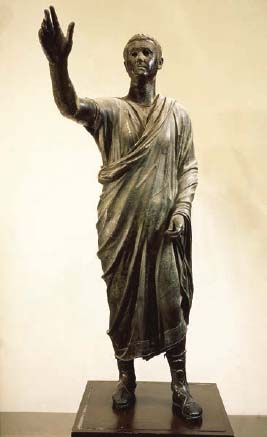Art of the Ancient World, C. 5000 B.c.e.–400 C.E.Roman Art |
What is Roman illusionism? |
The ancient Romans were known for their beautiful paintings, which they used to decorate the interiors of domestic residences. These paintings often created the illusion of space, much like a theater backdrop, and featured elements such as faux architectural motifs and outdoor scenes. The Villa of P. Fannius Synistor in Italy has some of the most important surviving wall paintings from the Roman world. The villa was buried by volcanic ash when Mount Vesuvius erupted in 79 B.C.E. (nearby Pompeii was also destroyed) and was excavated in the early twentieth century. Many of the paintings here feature objects painted using the trompe l’oeil technique, which means “trick of the eye.” For example, an image of a glass vase in the painting looks so real that it appears to exist in three-dimensional space. These illusionistic wall paintings were a status symbol for the wealthy Romans who filled their villas with them.

The Orator depicts politician Aulus Metellus during the time of the Roman Republic. Sculptures such as this would have been placed at the top of a column in a public space. (Art courtesy The Art Archive / Archaeological Museum Florence / Gianni Dagli Orti.)
